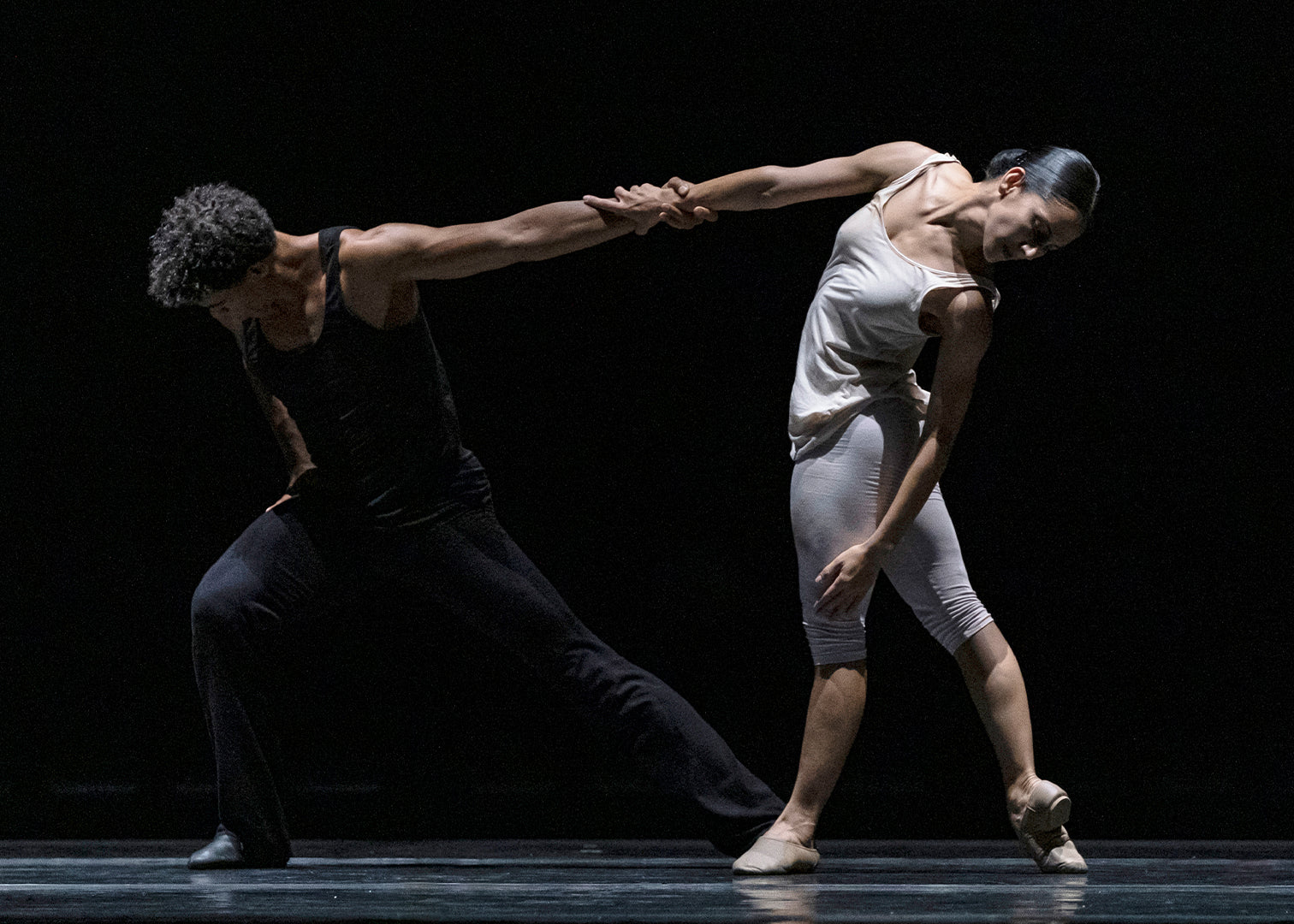As the sole performers of the night, Sikorski and Wellesley Wesley did an admirable job (wo)manning stage for two hours, offering up a bevy of energy and wit between them, plus a strong display of chemistry and mutual respect. It was this artistic harmony that kept the show afloat during its shaky first half and elevated it during its radiant second one, when the dancers’ madcap brand of humour and brassy political commentary came to the fore.
About that first half, which took the form of a 40-minute physical translation of composer Morton Feldman’s For John Cage: conceptually speaking, I found the piece—directed by Burrows and Fargion, who in 2002 created their own interpretation of the score—a worthy experiment in form, and an interesting comment on the perception of choreography and composition as formulas easily deciphered and reassembled rather than chronicles crafted just so. However, performance-wise the work felt lifeless and aloof, a far cry from Burrows’ and Fargion’s playful version (not to mention the vigorous music itself, which, to be clear, does not accompany the piece). Sluggish movements combined to make sluggish phrases that revealed disappointingly little about the dancers’ technical capabilities or personal style.
By contrast, the second two pieces were forthcoming and personal, the dancers’ individual strengths emerging clearly. “Digging” saw them converse via headset in a droll exchange that spanned topics as wide-ranging as the Bechdel test and the universal fear of death, and culminated in a comical rant about the importance of being yourself. As the dialogue flowed, so did the choreography, a slow-moving churn of organic shapes and interlocking limbs. Tanguy made excellent use of Wellesley Wesley’s strong lines and versatile voice, while Sikorski’s beautiful posture and brilliant comedic timing were given ample room to breathe.
Such qualities were likewise coaxed out in “Bloody Nora!” a riotous finale choreographed by ‘the grand dame of anarchic dance’ herself, Liz Aggiss. Hyped through a crackling voiceover as “a story of hormonal imbalance,” the piece is, among other things, a smart and searing send-up of the infuriating ‘Is it that time of the month?’ question so often levied at women who dare express an impassioned opinion. Clad in aviator caps and red ruffles, the two dancers romped and pranced their way through a series of dance theatre sketches mocking pearl-clutching reactions to perceived female transgressions. There was a reeling-off of euphemisms for menstruation (biggest hits include ‘Shark Week’ and ‘riding the cotton pony’); a can-can in which they chide their mothers for letting their daughters on stage; a hornpipe-accompanied procession of expletives.
In the post-show Q&A, Sikorski called “Bloody Nora!” a “natural fit” for her and Wellesley Wesley, likening it to “a piece of rep that’s only just been made.” Here’s hoping the sharp work will stick around in Nora’s arsenal for shows to come.









comments